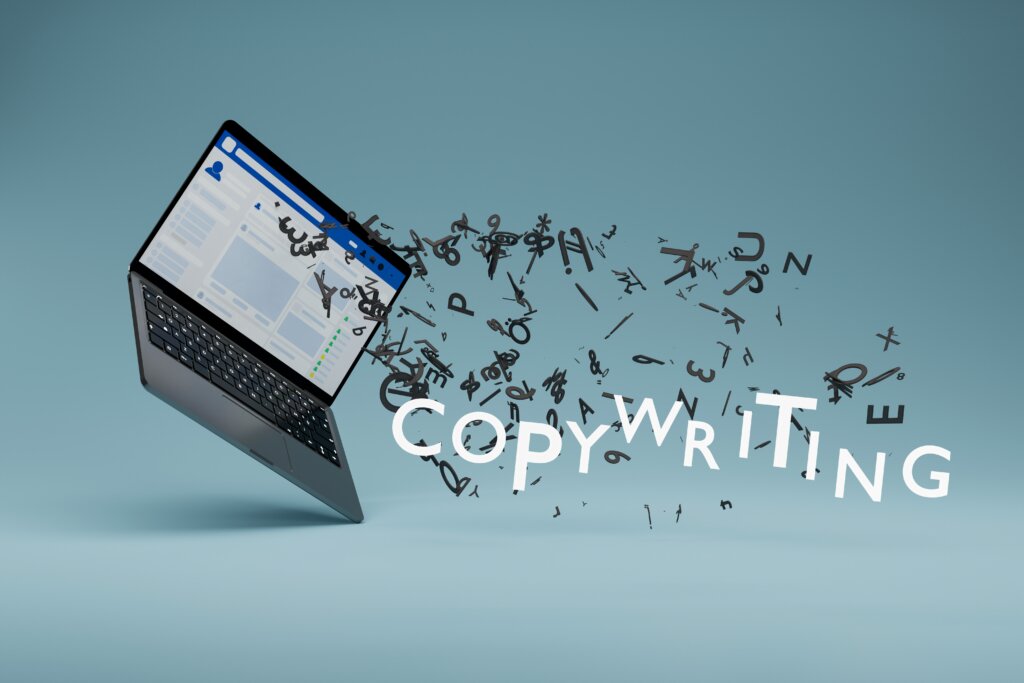It takes more than just throwing keywords onto a webpage to make content that is optimized. The goal is to write interesting content with purposeful use of bullet points, subheadings, and keywords.
In order to improve readability and maximize the overall user experience, subheadings and bullets are essential, and this leads us to the subject of content subheadings and bullets.
If readers find it difficult to read your material, they are likely to leave your website. This is the moment when subheadings shine brightly. They divide the content into small, readily readable sections and function as mini-titles.
In order to improve readability and the user experience overall, subheadings and bullets are essential components of text display. Subheadings serve as road signs that help readers navigate the information and divide it into manageable sections.
These give readers directions to quickly review the material and find the information that is significant for their interests. Conversely, bullets summarize in brief highlights, making understanding the content easier and more interesting.
Moreover, subheadings together with bullets not only organize information but also improve understanding by delivering the same in a structured visual format.
Content developers can capture and maintain the attention of their audiences by integrating these features strategically, hence encouraging deep engagement and interaction with the material.

Understanding the Function of Subheadings
Subheadings are elements of structure within content that differentiate various sections or topics. They are mainly intended to arrange hierarchicalhierarchically contents for easy flow through passages that may have complex ideas. By providing a summary of what follows, they help in understanding and keeping readers engaged.
Information Organization And Structure
By dividing content into logical segments, subheadings contribute significantly towards coherence and organization, thus facilitating an easy reading process.
Breaking Up Text for Improved Scannability
Long chunks of text can discourage readers, resulting in fatigue or disinterest.
With breaks provided by subheadings throughout the text, it becomes easier for one to scan through the material quickly, finding whatever he or she wants. This makes it more scannable; hence there are higher chances of finding useful information.
Enhancing Readability And Comprehension
Well-structured subheads increase readability by giving readers visual pauses as well as focal points that they can rest their eyes on during this course.
Some draw attention to key concepts or main ideas that support a central message, while others make these concepts appear obvious faster than if there had been no sub-heads at all. This improves comprehension, which increases retention, facilitating better overall effectiveness.
Exploring Bullets’ Effectiveness for Content
Bullets are visual elements used to present information concisely and easily digestibledigestibly. Their primary function is to break down complex ideas or lists into bite-sized points, making the content more accessible and reader-friendly.
Bullets help to create visual interest and draw attention to important details within the text, enhancing overall readability and comprehension.
Advantages of Utilizing Bullets
Creating Visual Hierarchy and Emphasis
Bullets create structure by showing the most important points. They are organized in such a way that they help to direct eyesight toward the most critical parts of any text.
Summarizing Information Concisely
Bullets are advantageous because they summarize information precisely. They convey complex concepts or long texts through very short sentences so that people can easily understand them.
Facilitating Skimming and Scanning for Key Points
Today, readers typically skim or scan rather than read content on the web.
Bullet-pointed lists make it easier for readers’ eyes to move quickly down them looking for information. People may quickly look at these dots and see what is essential, thus obtaining desired data efficiently. Bullets improve user experience and interaction with a website as they facilitate easy skimming and scanning of content.
Best Practices for Crafting Subheadings
Every well-structured piece of writing needs subheadings that help readers understand the primary points. Subheadings not only make content readable but also easy to get straight to the point.
However, it is not just simple to craft effective subheadings, so here are some best practices for writing perfect subheadings for your website or any other content.
Writing Clear and Descriptive Subheadings
Clear and descriptive headings are important in guiding readers through content and enabling them to understand how the material is organized.
In this case, one should employ words that reflect on what is written in the section and which can be able to sum up an entire part of it or give a brief explanation of the individual’s thoughts.
Using Keywords for SEO and User Navigation
Inserting relevant keywords into subtitles can enhance content search engine optimization (SEO) as well as user navigation.
Keywords assist search engines in understanding content topics and their appropriate indexing when being searched by others.
Also, using such key phrases will ensure users quickly locate the information they require from materials, especially if they are skimming through this document or navigating hierarchical structures like tables of contents, among others.
Maintaining Consistency in Subheading Styles and Formats
Consistency in subheading styles and formats allows for a smooth flow of ideas throughout the text, enhancing its authenticity. To maintain consistency across a document, choose the same formatting style, including font size and color characters, among others used with subtitles.
Moreover, maintain uniformity while arranging different sections’ subs according to their hierarchy. This helps one follow up easily, helping maintain coherence in an article.
Strategies for Effective Bullet Point Usage
Bullet points are incredibly handy when writing – they break down texts, making them easily digestible as well as promoting simplicity while presenting information clearly without wasting reader’s time.
Nevertheless, there isn’t equal footing on all bullet points.
Content should be structured consistently when using bullet points. Make sure that bullet points are arranged the same way throughout the document, including using the same style of bullets, indentation, and spacing.
Besides, try to have a parallel structure for a bullet point, maintaining consistency in grammar and syntax. This creates coherence and professionalism in the content, making it simple for readers to follow and understand. Employing parallelism and consistency while formatting bullet points will improve readability and reinforce organization within your content.
Formatting Bullets for Visual Impact and Clarity
When using bullet points, formatting plays a crucial role in enhancing visual impact and clarity. Choose bullet styles that are clear and easy to read, avoiding overly elaborate or distracting designs. Ensure adequate spacing between bullets and text to improve readability.
Additionally, consider using indentation or alignment to create a clean and organized appearance. By formatting bullets effectively, you can make key points stand out and improve the overall visual appeal of your content.
Keeping Bullet Lists Concise and Relevant
Bullet lists should be concise and focused, presenting information in a streamlined and digestible format.
Avoid overcrowding bullet points with excessive details or tangential information. Instead, prioritize the most relevant and important points, keeping each bullet succinct and to the point.
Keeping bullet lists concise can maintain reader interest and prevent information overload, ensuring that key messages are communicated clearly and effectively.
Incorporating Parallelism and Consistency in Bullet Points
Consistency is key when using bullet points in content. Ensure that bullet points are formatted consistently throughout the document, using the same bullet style, indentation, and spacing.
Additionally, strive for parallelism in bullet point structure, maintaining uniformity in grammar and syntax. This helps create a sense of coherence and professionalism in the content, making it easier for readers to follow and understand. By incorporating parallelism and consistency in bullet points, you can enhance readability and reinforce the organization of your content.
Practical Tips for Implementing Subheadings and Bullet
Before incorporating subheadings and bullets into your content, it’s essential to consider the context and purpose of the material. Assess the overall structure and flow of the content, identifying key sections or topics that would benefit from subheadings.
Considering the Context and Purpose of Content
Additionally, evaluate the type of information being presented and determine if bullet points would help summarize and highlight key points effectively. By considering the context and purpose of the content, you can tailor the use of subheadings and bullets to best serve the needs of your audience.
Testing Different Subheadings and Bullet Formats for Optimal Results
Not all subheadings and bullet formats will resonate equally with your audience. It’s important to experiment with different formatting styles and structures to determine which ones yield the best results.
Test variations in font size, style, and alignment for subheadings, and explore different bullet styles and indentation formats for bullet points. Pay attention to how these variations impact readability, comprehension, and overall user experience. By testing different subheadings and bullet formats, you can identify the most effective approaches for enhancing content engagement and retention.
Soliciting Feedback and Iteratively Improving Content Structure
Feedback is invaluable when refining the structure and formatting of your content.
After implementing subheadings and bullets, solicit feedback from peers, colleagues, or target audience members to gather insights on the effectiveness of your content structure. Pay attention to comments and suggestions regarding clarity, organization, and overall readability.
Use this feedback to iteratively improve your content structure, making adjustments to subheadings and bullets as needed. By continuously soliciting feedback and iterating on content structure, you can ensure that your subheadings and bullets enhance the overall quality and impact of your content.
Final Thoughts
Subheadings and bullets are indispensable tools for enhancing the organization, readability, and engagement of content. They provide structure and clarity, guiding readers through complex information and highlighting key points effectively. By incorporating subheadings and bullets strategically, content creators can improve comprehension, retention, and overall user experience.
Implementing effective subheadings and bullet strategies can significantly elevate the quality and impact of content.
As demonstrated, thoughtful consideration of context, testing different formats, and soliciting feedback are essential steps in optimizing content structure. By embracing these strategies, content creators can create more engaging, accessible, and impactful content that resonates with their audience.
Content formatting is an iterative process that requires ongoing evaluation and adaptation. As audience preferences and content trends evolve, it’s important to remain flexible and open to change.
Continually assess the effectiveness of subheading and bullet usage, and be willing to adjust formatting strategies based on feedback and performance metrics. By prioritizing continual improvement and adaptation in content formatting, content creators can stay ahead of the curve and deliver content that meets the evolving needs and expectations of their audience.
About The Author
Jana Legaspi
Jana Legaspi is a seasoned content creator, blogger, and PR specialist with over 5 years of experience in the multimedia field. With a sharp eye for detail and a passion for storytelling, Jana has successfully crafted engaging content across various platforms, from social media to websites and beyond. Her diverse skill set allows her to seamlessly navigate the ever-changing digital landscape, consistently delivering quality content that resonates with audiences.





